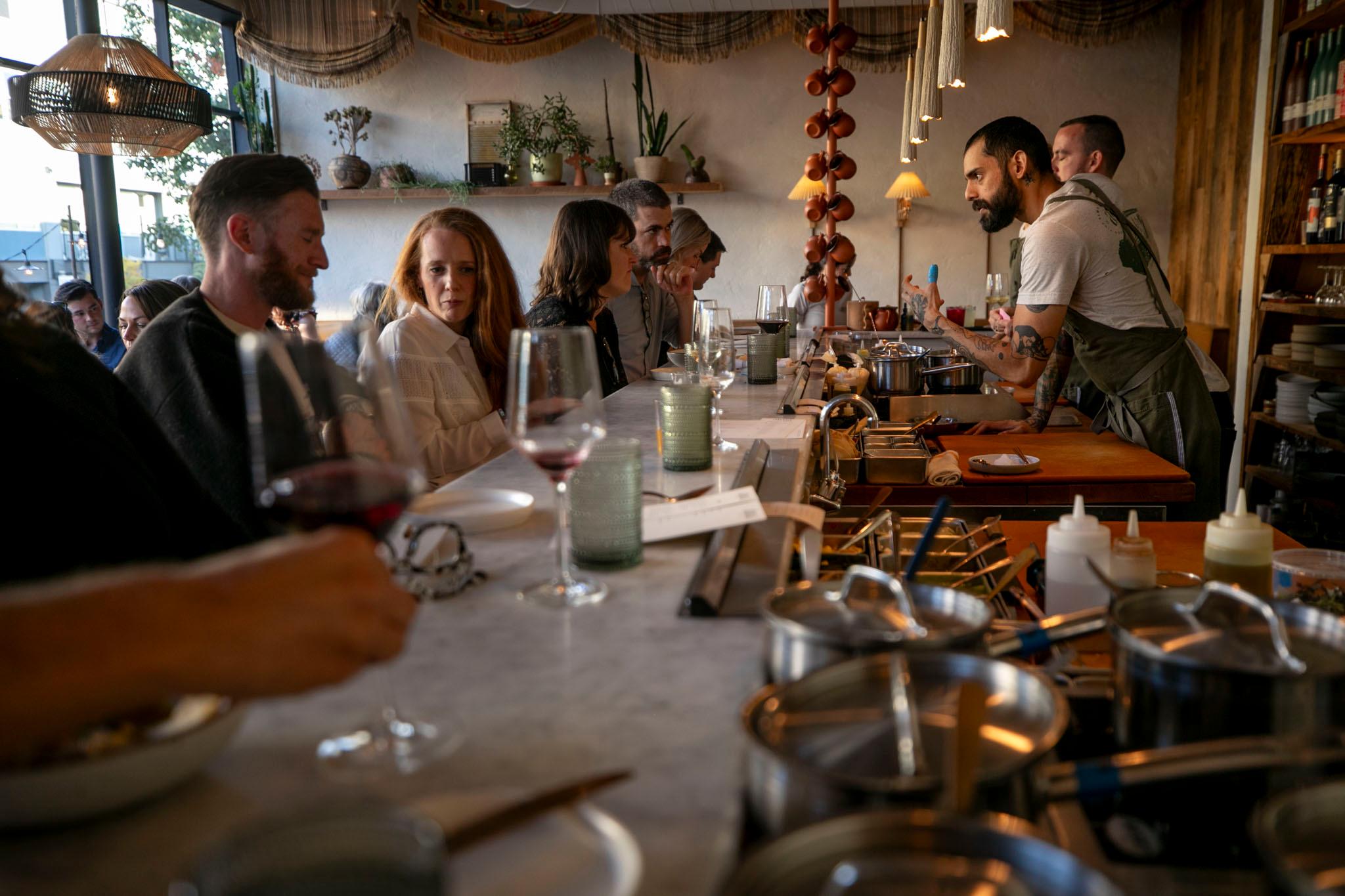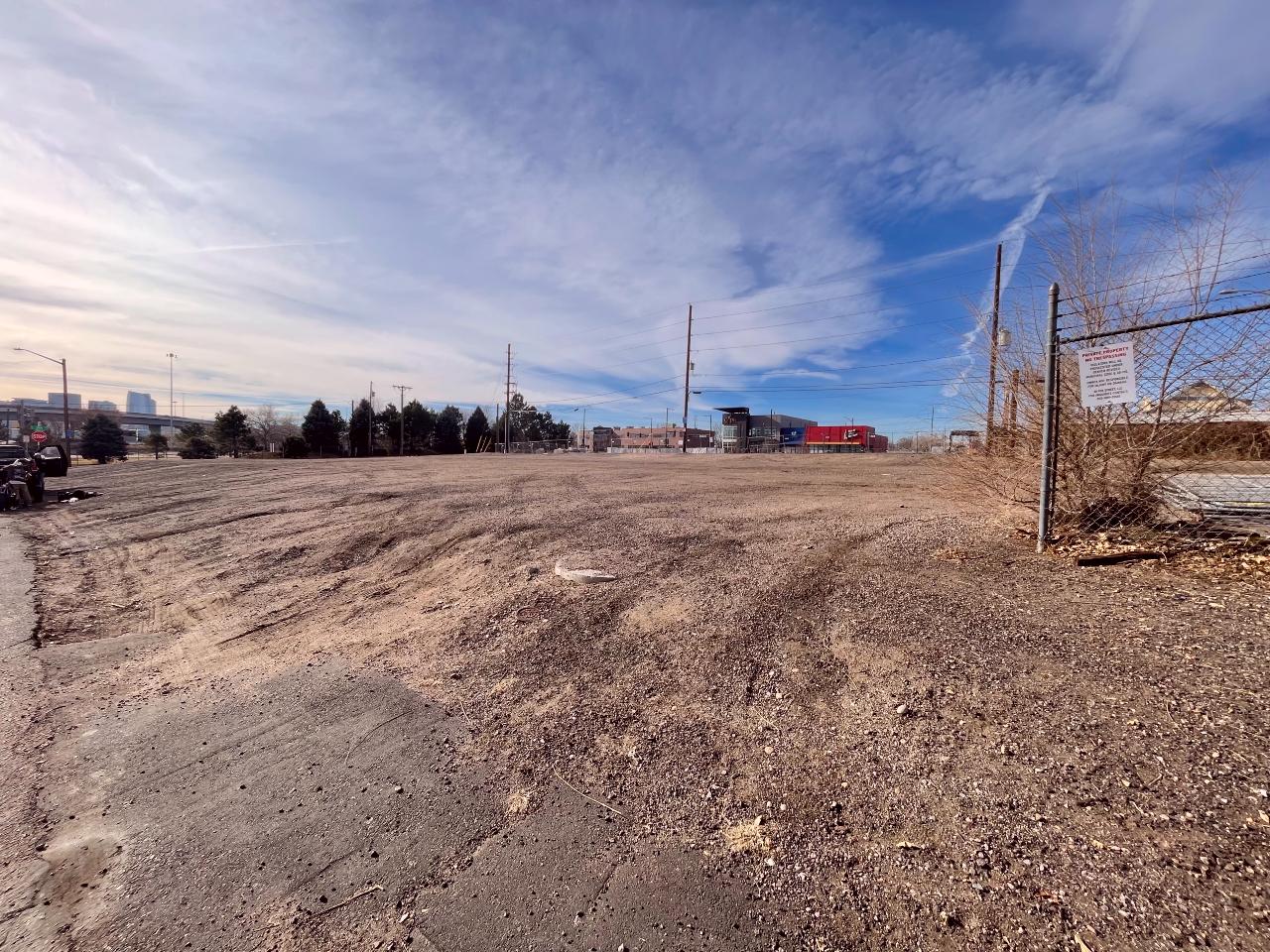Impressive sales increases. Applications from Brazil. "Was it worth it?" debates on Yelp.
In just two years, the Michelin guide has shaken up Denver’s food scene bringing in talent, boosting notoriety, and driving culinary tourism. It was all part of the plan.
“When you say a city has Michelin-rated restaurants, it's shorthand for a quality dining scene,” said Justin Bresler, vice president and chief marketing officer for Visit Denver. “The Michelin seal of approval really goes a long way for [people] to pay more attention to what we have going on here in Colorado.”
In 2023, a coaliton of the Colorado Tourism Office, local tourism boards and resort companies paid between $70,000 and $100,000 each for the Michelin Guide to expand to the centennial state. The goal was to promote Colorado’s culinary scene and boost tourism.
Bresler says Michelin diners are diverse.
“It's not just the most affluent customers, it's not just the foodies. Some of the groups most interested in cities that have Michelin programs are African-American diners. Some of the people most likely to plan a trip to go to a Michelin restaurant are millennials and Gen Zs,” he said. “And so in a world where everyone travels just a little bit differently, this really allows us to appeal to people really across the age, ethnic income spectrum.”
Bringing Michelin to Colorado
The Michelin dining guide has been around since the 1920s. It was started by the Michelin tire company to sell people on the idea of a road trip and, in turn, sell more tires.
At first, the guide only featured French restaurants. Later, it expanded across Europe. But it wasn’t until 2003 that the guide began reviewing American restaurants in major cities like Chicago and New York.

Twenty years later, Colorado decided it wanted in, partially as a means to boost the hospitality industry in a post-pandemic world.
“It's that old adage of the rising tide lifts all boats,” said Denise Mickelsen, communication director for the Colorado Restaurant Association and Foundation. “It's our opinion that having a light from the Michelin guide on 48 restaurants in 2024, has only served to shine a brighter light on the entire industry across the state.”
What makes a restaurant Michelin-worthy?
Mickelsen said there are an estimated 13,000 restaurants across Colorado.
Of them, just six have been awarded Michelin stars: Alma Fonda Fina, Beckon, Bosq, Brutø, Frasca Food and Wine and The Wolf's Tailor. (Four are in Denver, with Frasca in Boulder and Bosq in Aspen.)
The accolade is given for outstanding cooking based on five categories:
- The use of quality products
- The mastery of flavor and cooking techniques
- The personality of the chef reflected in the cuisine
- The value for money
- The consistency of food
The guide says a one-star rating means a “very good restaurant,” two stars means “it’s worth a detour”, and three-star restaurants offer "exceptional cuisine that is worth a special journey.”
The newest addition is already feeling the increased attention
In 2024, Alma Fonda Fina was the only new restaurant in the state to receive a star. The team there is led by Chef Johnny Curiel who grew up cooking in Breckenridge and leaning into his Mexican heritage through his cuisine.
Denverite caught up with him about a month after he received the news that the restaurant was recognized by Michelin.
“It was amazing,” he said, his smile wide. “It was a feeling that I can even explain. I still talk about it.”

Alma Fonda Fina was recognized for its Camote Asado specifically.
“It's an agave roasted sweet potato with a fennel whipped requeson and a salsa matcha,” Curiel said.
The innovation behind that dish and others noticed by the guide is what chefs say sets the Denver dining scene apart.
Reservation wait times at Alma Fonda Fina doubling from four weeks on average to eight since the star was awarded.
That’s in part due to people like Nicholas Annabi who specifically seek out restaurants recognized by the guide. Annabi told CPR News he picked the restaurant as part of his trip to Estes Park from Texas.

“We're going to stay at the Stanley Hotel, but we were looking for a good restaurant. We went online, and saw there was a Michelin star [at Alma Fonda Fina] and looked at the dishes and they looked absolutely fantastic, so we wanted to give it a shot and thankfully we were able to get a spot,” he said.
Curiel said now that the restaurant has a star, everyone wants a piece of the action, including industry workers.
“After the Michelin, I'm getting applications from Brazil, from London, from people that work in Canada. I've got applications from people telling me they'll work for free. They’re like, ‘Hey, I would love to work for you. I would love to learn,’” he said. “So I think it opens the doors on a bigger stage.”
Michelin can draw more tourists and more workers
The Denver International Airport doesn’t currently track numbers on culinary tourism, but a spokesperson told Denverite they do believe Michelin has made an impact.
“Having Michelin-rated restaurants … strengthens our reputation as a culinary destination,” they wrote in a statement.

The state’s Restaurant Association also believes the arrival of the guide will continue to bring more hospitality workers to the state, helping with Colorado’s labor issues in the sector.
“Professional restaurant people — front of house, back of house — come to Denver now because they know that they have a shot at being a part of a star,” Mickelsen said.
Even Bib Gourmand restaurants are feeling the Michelin effect
Chef Natascha Hess was a 37-year-old attorney when she started a Chinese food truck that later became the Ginger Pig in northwest Denver.
“A lot of people didn't think I should start a food truck and really doubted me,” Hess said.
This year, it won what’s called a Bib Gourmand designation from Michelin judges.

In the U.S., Bib Gourmand patrons must be able to order a starter, a main course, and a dessert for under $49 – before tax and tip. Just nine restaurants in the state have gotten the Bib Gourmand stamp. Hess said it’s brought more patrons through her doors.
Hess says being recognized for that work by Michelin is an opportunity to show people that she and her team have what it takes to give diners the gift of an outstanding meal.
“Before Michelin to now,” she said, “our sales have gone up 44 percent, so it’s been a tremendous difference for us in revenue.”

For Hess, her food is not only a source of great pride, but also a way to tell stories and evoke memories.
When she left the courtroom for the kitchen in 2016, she dreamed of sharing the meals she learned to cook from her Chinese host family in college. That includes a Chinese-style Borscht that Hess took six years perfecting before adding to the menu at the Ginger Pig. It serves as a tribute to her late host mother.
“We put that soup on the menu and I've had some people who are from China come in here and tell me that it tastes like home. So that's been really special for me,” she said. “But also, the thing about Michelin is it’s a team award. It's not a chef award. It's all about the restaurant and all of us.”
With all that attention comes pushback and misconceptions about working in a Michelin kitchen
While much of the Michelin impact has been positive, restaurants are also feeling the pressure from patrons.
That’s due in part to foodie pop culture touchstones to the Michelin guide like “The Bear.” The multi-award-winning television show follows a chef seeking recognition by the guide and portrays Michelin-level restaurants as intense, nearly militarized operations.
“As a guest, you see it and then in [a restaurant] you're like, oh no, they're not screaming ‘yes chef,’ they're not intense, they're not a Michelin star restaurant,” Curiel said. “But it’s like no, there’s so much more that goes into a restaurant like this.”

Chef Michael Diaz de Leon agrees. The former executive chef at the Michelin-lauded Mexican restaurant Brutø, he parted ways earlier this year to create a pop-up concept to reconnect with his passion and continue to hone his craft.
He tells Denverite that sometimes, star-seeking patrons don’t always understand what goes on behind the scenes of a Michelin-star restaurant. The concept has led to some tension in Yelp and Google reviews where eaters don’t agree with a Michelin designation.
“People are like, oh, it's just a taco,” Diaz de Leon said when explaining one of his favorite Brutø dishes. “They didn't understand that that taco took so much time. We had been working on our masa program for three years to finally get the perfect tortilla from the perfect corn, and then getting the perfect bison that we knew was coming from the eastern range of Colorado. It was sustainable and that taco took three days to make.”
Other chefs tell Denverite it takes a dedicated and passionate team working in tandem to consistently execute the Michelin-level food at restaurants once the guide has recognized them. Many say their staff is like a family.

“We have a lot of community and purpose and teamwork and love, and I think that's the thing we're most proud of that we've created here,” Hess said. “We're really proud of the award, but really more proud of the culture and the teamwork, and that's the kind of thing that it takes to win an award like that.”
Diaz de Leon agrees, saying food is more than just a business.
“I am really enjoying the impact of the Michelin and how it's bringing a lot of more eyes to the scene in general,” he said. “I just don't want us to lose sight of why we do the things that we do and continue to cook because it's what brings us happiness and joy.”
He has one piece of advice for chefs across the state: “Don't get jaded by the Michelin stars.”
The next round of Michelin awards will be announced in 2025.














